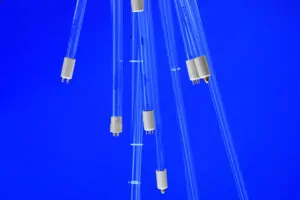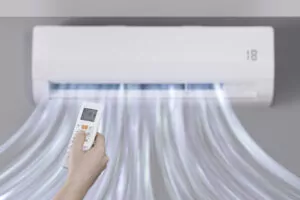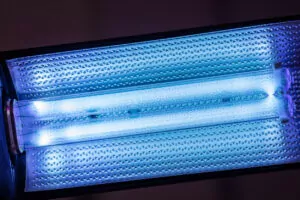ASHRAE, the American Society of Heating, Refrigerating and Air-Conditioning Engineers, was founded in 1959 as a result of the merger between the American Society of Heating and Air-Conditioning Engineers, ASHAE, and the American Society of Refrigerating Engineers, ASRE. The mission of ASHRAE is to advance the science of heating, ventilation, air conditioning, and refrigeration to serve humanity for a sustainable and healthy environment for all.
ASHRAE Drafts New Standard to Control Infectious Aerosols
As part of this mission, ASHRAE has recently drafted a new standard, 241P, Control of Infectious Aerosols, that addresses indoor air quality and its contribution to the spread of airborne pathogen-based diseases. This new standard outlines the minimum requirements for HVAC systems with a focus on reducing the risk of transmission of airborne diseases, including influenza as well as COVID-19. Standard 241P is aimed at offering guidance to create healthier environments where people live, work, and play.
This pathogen mitigation standard 241P recognizes the importance of air changes per hour (ACH) to control and suppress the spread of airborne pathogens. One of the most important points of focus of the standard is that buildings would be required to achieve 4 to 6 full-volume air changes per hour.
Traditionally, ACHs have only referred to mechanical ventilation, swapping inside air with fresh outdoor air, although this new standard includes “air cleaners” as equivalent technologies that, when deployed in a building, can add to the ACH count. HEPA filters, as well as UVC air purification systems, are both considered mechanisms that add to the ACH count when deployed in buildings.
Standard 241P is expected to have final approval in June, with an anticipated publishing date in July 2023. The global COVID-19 pandemic was one catalyst to spur the development of the standard to protect people against the spread of pathogens by improving ventilation and indoor air quality in occupied buildings. This is the first standard of its kind that addresses the concept of mitigating pathogen spread and addresses long-range transmission with minimum requirements for filter and air cleaner safety and effectiveness, room air distribution, and equivalent outdoor air, including ventilation, filtration, and air cleaning. The areas of focus include system operation, maintenance tasks, residences, and healthcare facilities, as well as the development and implementation of Building Readiness Plans.
Air Cleaners to Improve Indoor Air Quality
There are various mechanisms that are proven to improve indoor air quality, including:
- Ventilation – mechanical air exchange
- Filtration – pushing air through a filter
- UVC lamps – efficient and effective for air purification
UVC and Far UVC lamps equate to significantly more air exchanges than mechanical ventilation alone. ASHRAE offers guidance in the usage of UVC disinfection lamps in HVAC systems in Chapter 62, Ultraviolet Air and Surface Treatment. UVC air purification is becoming increasingly popular due to concerns about the quality of indoor air and the ability of UVC radiation to interrupt the transmission of harmful pathogens, including influenza viruses, Mycobacterium tuberculosis (TB), pathogenic organisms as well as potential bioterrorism threats.
UVC lamps used in room settings such as upper room UVGI systems and air handling systems inactivate harmful microorganisms by damaging the structure of nucleic acids and proteins (DNA) at the molecular level. This inactivates the pathogen and makes them incapable of reproducing, thus rendering them harmless. Upper room, also called upper air, devices installed in occupied spaces control suspended bacteria, viruses, and fungi contained in droplet nuclei that have the potential to be transmitted through HVAC systems. In duct UVC systems installed in air handling units control pathogens and bioaerosols in recirculated air and help to control microbial growth on cooling coils and other mechanical surfaces.
AHSRAE Standards Help UVC System Designers of Air Purification Systems
UVC air purification systems rely on performance data from UV lamp manufacturers, including data from the germicidal lamp, the ballast, and fixtures, as well as the expertise of system designers. Many UV germicidal lamp manufacturers utilize a variety of methods to determine the UV dose delivered. ASHRAE offers standards that help UVC system designers to choose the correct components and rate equipment performance.
ASHRAE Standard 185.1, Method of Testing UV-C Lights for Use in Air-Handling Units or Air Ducts to Inactivate Airborne Microorganisms, establishes methods for testing and evaluating the effectiveness and the ability of UVC lights to inactivate airborne pathogens when installed in typical ventilation systems.
ASHRAE Standard 185.2, Method of Testing Ultraviolet Lamps for Use in HVAC&R Units or Air Ducts to Inactivate Microorganisms on Irradiated Surfaces, establishes similar test methods to measure the intensity of UV lamps on irradiated surfaces when operating in typical HVAC&R conditions.
UVC lamps have been used for years in HVAC systems, although are gaining in popularity and usage due to their high efficacy in eliminating the spread of airborne pathogens and harmful microorganisms.
UVC Lamps Proven Effective And Efficient In Air Handling Systems
According to a study published by Columbia University, far-UVC light rapidly reduces active airborne microbes to make indoor air quality essentially as safe as outdoor air. This study revealed that far UVC light bulbs took less than five minutes to reduce microbes by more than 98%, even as microbes were continually sprayed into the room. As long as the lights were on, the level remained very low. This study suggests that far UVC lamps installed in the ceiling could be an extremely effective passive technology to reduce person-to-person transmission of airborne mediated diseases such as influenza and COVID in indoor settings. This lowers the risk of the spread of these pathogens as well as mitigates the next pandemic
In this study, far UVC lamps provided the equivalent of 184 equivalent air exchanges per hour. As the efficacy of indoor air quality treatment systems is typically measured in terms of equivalent air changes per hour, this study showed that UVC lamps far surpass any other approach to disinfecting occupied spaces indoors.
Far UVC lamps are UV lamps designed to emit wavelengths in the range of 222 nm, compared to typical UVC germicidal lamps, which are commonly designed to emit wavelengths in the range of 254 nm. 254 nm lamps are highly effective at killing a variety of harmful germs, although human exposure can cause damage to the skin and eyes. 222 nm lamps are becoming more popular as they are proving to deliver the same or greater germicidal efficacy in many applications and are safer for use in occupied spaces.
Another study reported by the U.S. Department of Energy conducted by Edward Nardell, MD Professor of Medicine, Harvard Medical School, showed that Mercury GUV (germicidal UV) lamps added the equivalent of 24 equivalent active air changes per hour and consumed the same energy as comparable fluorescent lights. Since the CDC recommends 6 to 12 ACH ventilation in hospital procedures and isolation rooms, this study shows that UVC germicidal lamps once again surpass requirements for air changes per hour.
Germicidal UV Lamps for Air Purification Systems
Germicidal UV lamps, including far UVC lamps, are highly effective and efficient and can treat a large volume of air at once. Upper room UVGI systems provide significant improvement to air changes per hour, and whole room far UVC systems additionally increase ACH activity to improve air quality and most of the room around occupants. HVAC UVC systems clean and treat the air with required air capture, whereas far UVC is less dependent upon air movement and disinfects air in the room around occupants.
Consult with an experienced UV lighting company, such as the leading global supplier, LightSources, to learn more.
LAMP PRODUCT DATA:
UV Germicidal LampsLAMP APPLICATIONS:
UV Germicidal ApplicationsLightSources offers a wide selection of standard UVC germicidal lamps, including low-pressure mercury, low-pressure amalgam, and medium-pressure lamps in a variety of shapes and sizes. We provide custom UV lamp design, engineering, and development, including prototype development and testing. Contact us to learn more about germicidal UV lamps for air purification and improved air changes per hour.
This post is also available in:
 Chinese (Simplified)
Chinese (Simplified)  Spanish
Spanish




